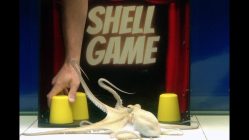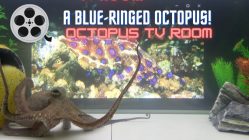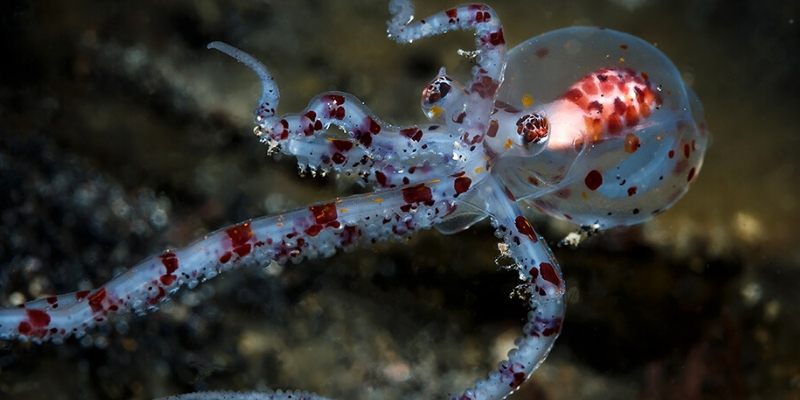
Dear reader,
Please do not be immediately disheartened. No, we will not refer to Paul the Octopus here. There is, in fact, an octopus species called the Football Octopus but Paul did not belong to this particular species. He was, instead, a common octopus. Although his fame is hard to surpass, you might be surprised with all the amusing facts surrounding the Football Octopus.
The Football Octopus is also known as the Tuberculate Pelagic Octopus. Its scientific name is Ocythoe tuberculata and it is the only member of the family Ocythoidae.
Football Octopus Facts
- Scientific Name : Ocythoe tuberculata
- Common Name: Tuberculate Pelagic Octopus or Football Octopus
- Size: Females 1 m (3.3 ft) Males 10 cm (3.9 in)
- Weight: 15 pounds
- Lifespan: Unknown
- Found in: Northern Hemisphere
- Sub-Order: Incirrina
- Discovered: 1814
- Scientific Name : Ocythoe tuberculata
- Common Name: Tuberculate Pelagic Octopus or Football Octopus
- Size: Females 1 m (3.3 ft) Males 10 cm (3.9 in)
- Weight: 15 pounds
- Lifespan: Unknown
- Found in: Northern Hemisphere
- Sub-Order: Incirrina
- Discovered: 1814
There are two main reasons why the Football Octopus is considered unique. First, it is equipped with a swimbladder and second, the eggs of the females hatch internally.
—Pelagic Species—

The Tuberculate Pelagic Octopus, as its name implies, inhabits the open ocean.
Most octopus species reside at the bottom of the sea, crawling on the seabed where they can hide in dens. The Football Octopus, however, is a near-surface species, though it can be found down to a depth of 200 meters. At night, large females have been caught in drift nets which hung from the surface down to a 10 meters depth.
The species occurs almost globally in tropical, warm, and temperate waters, especially in the Northern Hemisphere. Its distribution is quite wide, as Football Octopuses have been spotted in the North Pacific Ocean, off the coast of California but also in the Mediterranean Sea and in the eastern and western parts of the North Atlantic. A few individuals have been recorded even in the southern hemisphere but it is speculated that the warm currents of the Indian and the Pacific oceans were the cause of their presence there.
As global warming has affected the temperatures of the sea, the Football Octopus species tends to appear more and more in areas outside the range where it typically appears.
However, being pelagic means that scientists or fishermen do not encounter the Football Octopus so often. That is why there is not a lot of information available regarding this species.
—Main Characteristics—
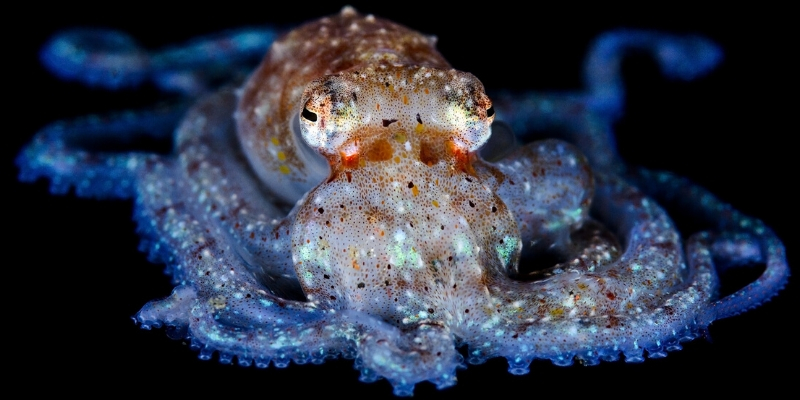
The first description, though a short one, of the Football Octopus dates back to 1814. Back then, this species was often confused with the Argonauts and their distinction was established by Rafinesque, the biologist who first described and named the species. According to him, Football Octopuses are much larger than Argonauts, being ”larger than a man’s head, and weighing 15 pounds.”
On the other hand, the Football Octopus exhibits a behavior which reminds of the physical appearance of the Argonauts. There are reports of smaller females and mature males hiding inside salps, in the same way Argonauts use their shells to hide. Unfortunately, scientists still lack sufficient evidence to be able to draw conclusions about this strange relationship between the salp and the Tuberculate Pelagic Octopus.
The Football Octopus displays a sexual dimorphism when it comes to size. Females are much larger than males. A female can be up to ten times bigger than a male!
The Tuberculate Pelagic Octopus has two pairs of arms shorter than the rest. Their arms are not very long, their length is more or less equal to their bodies. Their mantle is characterized by a pattern of ridges.
The females are characterized by high fecundity, being able to lay more that 100.000 eggs. These eggs are very small, only 1.75 mm long.
Many scientists have reported that the Football Octopus is ovoviviparous, meaning that live youngs develop inside the body of the female. They have observed embryos in various stages of development in the oviducts of female specimens. The oviduct of the female expands considerably in order to make room for the developing embryos.
—The Swimbladder—
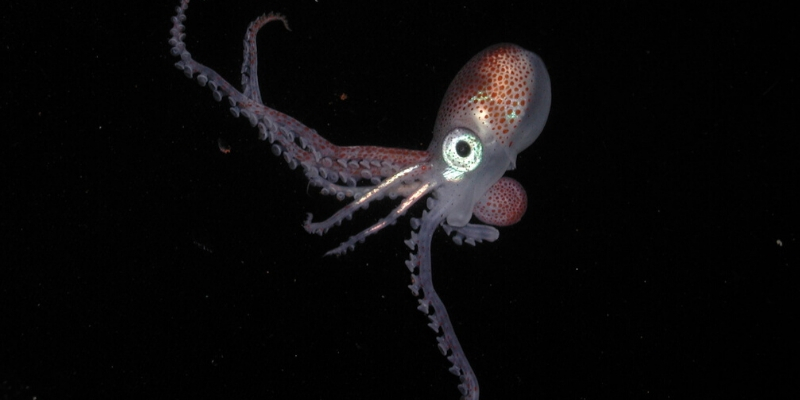
Many fishes possess a gas-filled sac to control their buoyancy and preserve their energy. The swimbladder is a tool also possessed by female Football Octopuses. It enables them to achieve neutral buoyancy. It is often referred to as a dorsal sac as well, since it is still unclear if this organ performs additional functions other than buoyancy.
Thanks to its swimbladder, the female Tuberculate Pelagic Octopus exhibits excellent swimming skills.
The swimbladder of the female Football Octopus is located on top of the visceral mass, directly above the digestive system and has a duct into the mantle cavity. By releasing bubbles or air, the octopus is able to direct its movements forwards, upwards, sideways or backwards with the help of two accessory funnels located on both sides of its mantle.
The anatomy of the swimbladder changes as the female octopus grows. The swimbladder of immature individuals is more flat and long and has thick gelatinous walls. The walls are transparent and a blood vessel is easily discerned. Adults possess a less gelatinous swimbladder with a larger, expanded lumen.
The interesting point about the swimbladder is its relation to how different species of octopuses have evolved in a divergent manner in order to adapt to the surrounding conditions. Similar to how the Argonauts have developed their shells, the Football Octopus has developed this dorsal sac as a buoyancy structure. Both mechanisms may be some kind of remnants of the ancestral shell of cepholopods.
Finally, it seems like the Tuberculate Pelagic Octopus, similar to the Argonauts, does not adapt well to life in the aquarium. There is a suspicion that the structure of the swimbladder might be responsible for that.





